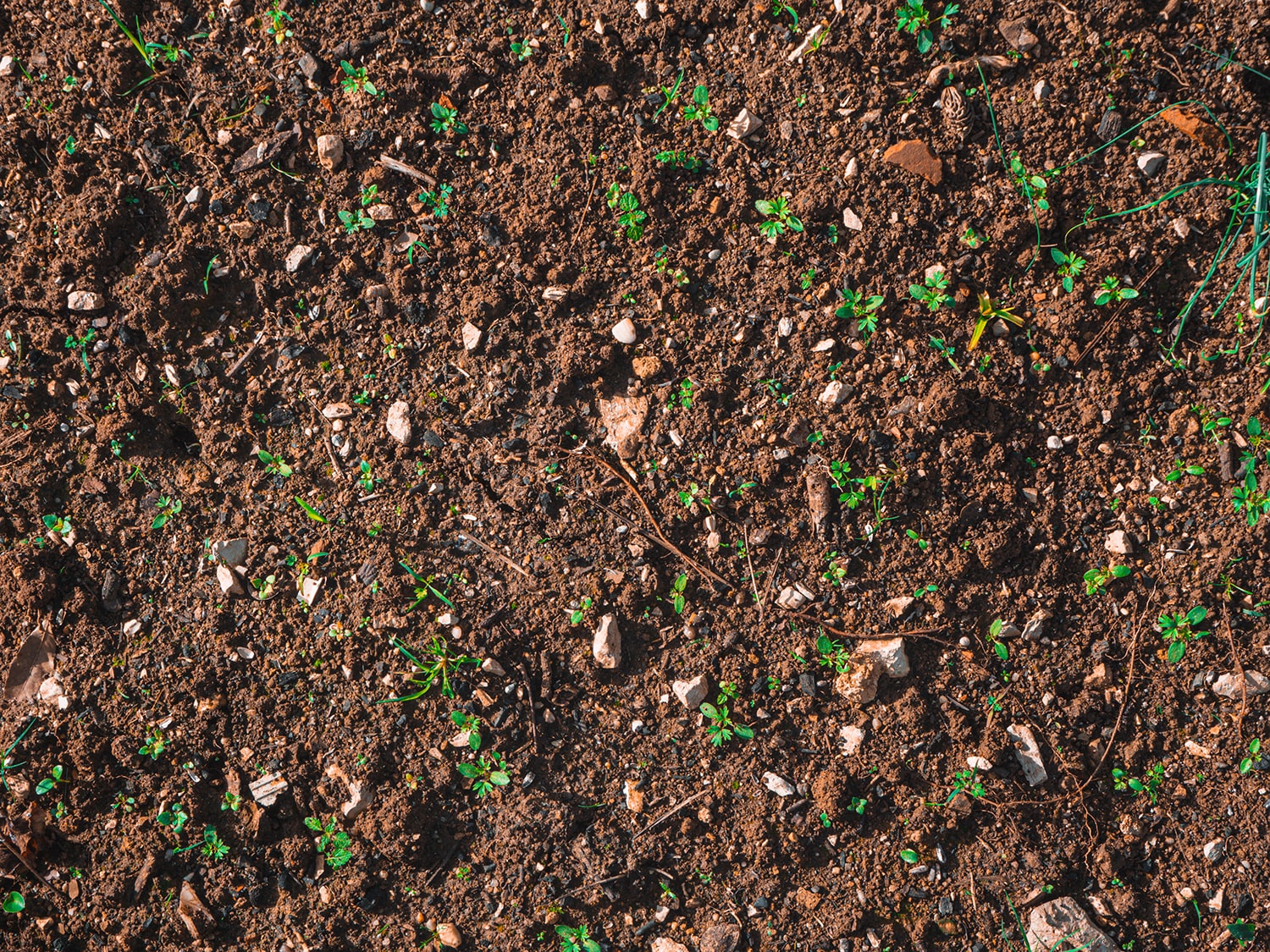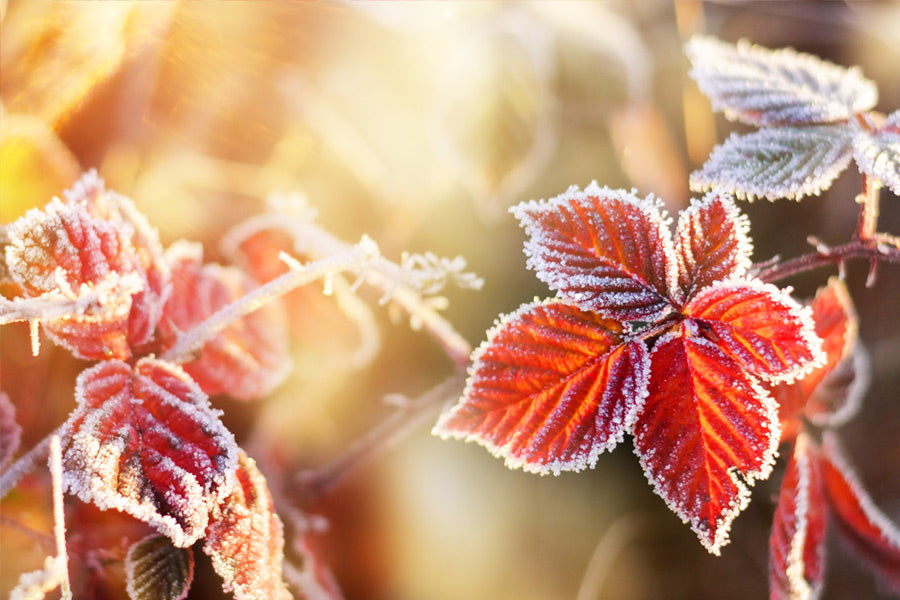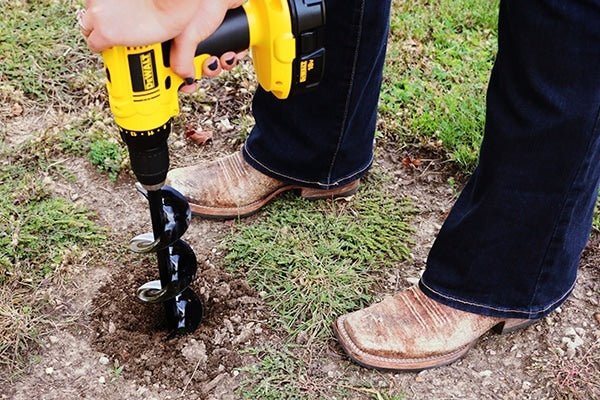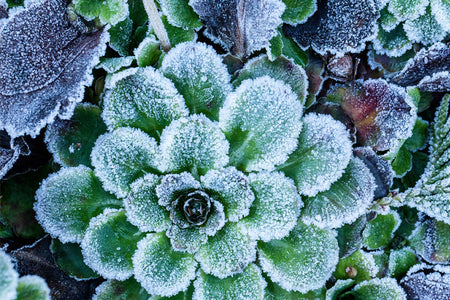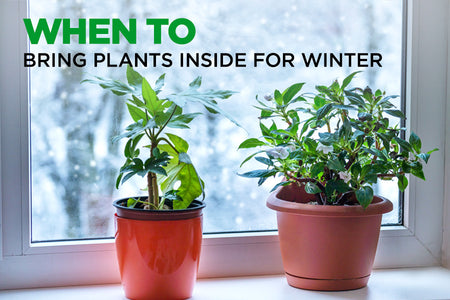Frost can be life-threatening to outdoor plants, especially less-hardy plants like tender bulbs, tropical plants, and summer annuals. Knowing how to protect plants from frost is crucial when temperatures dip below 28 degrees (a hard freeze). At this point, the water inside the plants can freeze, causing dehydration and even death.
Here are seven tips to help you protect plants from frost damage:
- Place tender plants in frost-resistant areas
Cold air sinks while warm air rises, so keep your seedlings or tender annuals elevated, such as on a bench or picnic table, to prevent exposure to cold air pooling at ground level. Also position semi-hardy plants near buildings, especially those with dark-colored walls facing south and west as these exteriors absorb more heat during the day and radiate warmth at night.
- Cover your plants before sunset
Covering your plants with frost cloth, milk jugs, empty plant pots, buckets, or sheets helps trap heat radiating from the soil, providing extra frost protection. Just remember to remove the coverings in the morning to prevent condensation buildup, which can freeze and damage the plants.
- Keep plants warm with jugs of water
Water takes longer to cool than air, so fill milk jugs with hot water and place them under your plant covers. The slow release of heat from the jugs will help maintain a warmer environment overnight, protecting your plants from freezing temperatures.
- Water plants properly before a frost
Moist soil retains more heat than dry soil, so water your plants in the evening before frost is expected. This helps keep the ground warmer through the night. Be careful not to overwater, as excess moisture can damage roots and freeze the foliage.
- Bring potted plants indoors
If frost is on the way, bring your potted plants inside for the night. Roots in pots are more vulnerable since there’s less soil to insulate them. If moving them indoors isn’t an option, store them in a garage or shed that is protected from the elements overnight. Pro Tip: If you do bring your outdoor plants in for the night, be sure to keep them separate from your indoor plants to avoid transmitting disease.
- Use mulch to insulate the soil
Applying a thick layer of mulch around the base of your plants can help insulate the soil and retain warmth. Mulch acts as a protective barrier, keeping the roots warmer during cold spells and reducing the risk of frost damage.
- Install windbreaks
Cold winds can exacerbate frost damage on tender or exposed plants that you cannot cover or bring indoors. Using frost cloth for plants, burlap, or plastic sheets to set up temporary windbreaks can help shield your plants from harsh winds, reducing frost exposure and potential damage.
Plant frost damage is a major worry for gardeners during winter nights. The best way to protect plants from frost is by following these seven tips, which will help safeguard your plants from frost and ensure they survive through cold winter nights.


